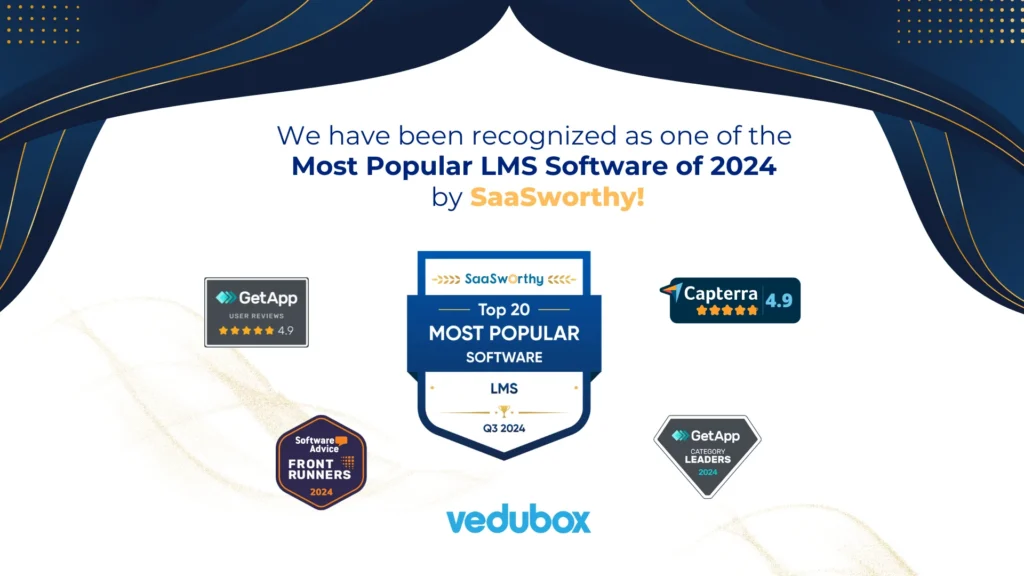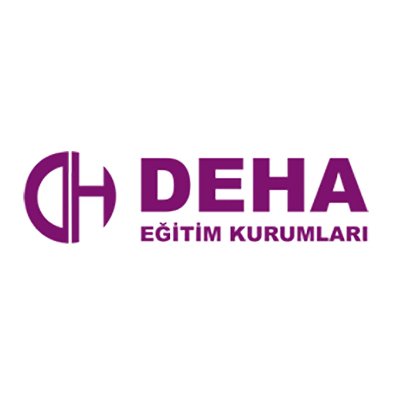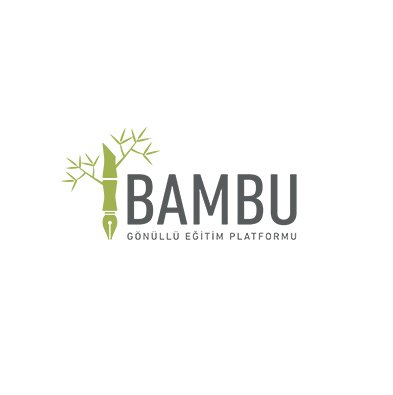What is LMS? Learning Management System From Scratch
What is LMS?
What does a learning management system or an education management system do?
In recent years, we have started to encounter these questions more and more. The most important reason for this is the increasing impact of technology in the constantly transforming education sector.
Developments in the field of education have transformed education not only as a method but also as content. Now we have an extremely flexible education model in which students determine the curriculum and receive education from anywhere they want.
So what is LMS? How does LMS work? What are the benefits of LMS? What are LMS examples? You are in the right article to learn the answers to all these questions.
What is LMS?
LMS aka Learning Management System came to the agenda towards the end of the 90s as a concept. It can be defined as software that enables the distance education model to be applied on the internet. LMS responds to many needs such as learning management, reporting, tracking, automation, file sharing, class creating, giving online lectures, and homework.
In the era of digital education, the LMS is gaining power and importance gradually. With the coronavirus epidemic, which caused a massive transformation in many fields, including education, in 2020, the use of LMS increased greatly.
However, even before the epidemic, more than 300 million students around the world were in contact with online education at some point. This number has exceeded 1 billion after 2020.
These numbers show that in the future, some courses will continue to take place online, even in traditional education. Many universities have already started to lecture many courses online for various reasons and to reduce the workload. This situation seems to reach the basic education level as well.
As a result, hybrid education models await us in the future.
How Does LMS Work?
LMS makes e-learning and hybrid processes more efficient while it makes easy following and managing the education activities systematically. The software has two interfaces:
- ”admin” interface used by a person, institution or company,
- “user” interface that trainees enter with their usernames and passwords.
However, in advanced LMSs such as Vedubox, the user interfaces vary according to different user types.
In this way, the user can see the training assigned to him and receive online training whenever and wherever he wants, in accordance with the conditions determined by the admin. With the LMS platform, admins can easily access data such as who attended the training and when, who completed it, who stayed online for how many minutes, which e-trainings they received, or which questions they answered correctly.
LMS has 3 different distribution models:
- Cloud-based (SaaS): LMSs are registered in the cloud. Thus, training is protected by the cloud company used against cyber-attacks and technical updates are made quickly. Users can start using it without the need for any installation. Users can access the presented content and live training from any device at any time they want or when the admin decides. With this method, you can also use your Learning Management System on mobile. Vedubox falls into this category as a cloud-based LMS.
- Self-Hosted: For use, you need to download directly from the site or request a software disc. Downloading directly from the site is the more common way. It is easy to control and customize with such LMSs.
- Desktop application: You can use LMS as a desktop application, you can access it with multiple devices. So, you can easily work with your entire team.
How To Use LMS?
After answering the question of “What is LMS?”, let’s look up how to use LMS.
According to different distribution models, the use of LMS changes. While other models require setup, with a cloud-based LMS you can get started with effective training in three steps.
- Create an education: Sign up to the cloud-based LMS platform, personalize the system with your logo and your field name. Firstly, create an education to use it effectively. In order to do this, you can write your course materials on LMS or upload the file of the materials (Word documents, PowerPoint presentations, articles, video content, etc.) to LMS.
- Organize the education: You can set rules, draw a different way for each and every step of the education. After customizing your education, assign users to the training.
- Begin teaching: You’re ready to serve your education to your members. Because of this convenience, cloud-based LMSs are a much more practical solution.
If you still have questions about how to teach online, you can get more detailed information in our article: 5 Steps to Create Online Courses To Sell
LMS Checklist
Education management systems, namely LMSs, have to provide some features.
We recommend that you take a look at whether it has these features when choosing an LMS for your online education. Thus, you can use a single platform for a long time and meet all your needs under one roof.
Here see the general features of Vedubox to know what to expect from your new LMS.
1. Intuitive User Interface
Instructors and learners will access all content using this platform. The clarity of the platform is one of the most critical factors that will increase the efficiency of education. That’s why you need an intuitive user interface.
Users who have already come to learn experience difficulties while using the platform reduce their motivation. When choosing an LMS, make sure it is user-friendly.
2. Personalization
Personalization has been one of the most needed features in almost every technology for years. The customizability of the LMS you use will appear in different ways.
You will need to customize certain aspects of the user interface and online educational content in the education management system you choose for digital education. For example, using the interface with your own logo and your website’s domain name will make you look more corporate. In addition, you can activate different features for different users and access only used elements. Thus, you can offer a much simpler and easier-to-use platform.
3. Reporting and Analysis
One of the best things about online education is the reporting and analysis feature. If the LMS you choose does not have these features, you miss an essential advantage.
Throughout digital education, you will collect a lot of data that you need to measure and evaluate. At this point, the powerful reporting and analysis features of your LMS that match your goals will make your job easier. For example, with one click, you can access information such as attendance reports of users, completion rates of the training, and how much each user has completed the learning path.
4. Social Learning and Interaction
Users need to interact with the instructor and each other when teaching remotely. This is very easy with interaction-oriented LMSs that support social learning.
For example, users can join social media groups or online discussions. In addition to peer interaction and information exchange, they can easily express their opinion. Thus, the efficiency of learning and the user’s motivation increase. Especially LMSs with features such as forums and blogs will help you use different ways to interact.
5. Mobile Compatibility
Users demand more flexibility when they study online. Above all, they want to access education and receive information when they need it. Therefore, you need to use mobile compatible LMS.
6. Online Exam and Test
Online exam and test feature is a must for an LMS. You need to quickly evaluate the progress of users with midterm exams and end-of-training exams throughout the entire learning process.
The most noteworthy handicap with assessment tools is security. This handicap can be solved by choosing online education platforms that offer not only online exams but also secure exams when choosing an LMS.
7. Certification
People involved in your training will want to document their efforts. This both makes your training more formal and motivates users.
Powerful LMSs let you specify and even automate assessment methods. After the training process, choose training management systems that will allow you to give certificates integrated into the system.
8. Data Security Protocols
Cyber security concerns all industries. Being aware of this, LMSs take precautions and offer comprehensive data security, especially your training materials and user information.
Find out how they take precautions to protect your data when choosing an LMS.
9. Educational Materials in Different Formats
You will need to frequently use primary resources such as PDF and MS Word documents when you start teaching online. But for a robust digital education, you need much more diverse resources.
Ensure that the LMS you will use supports content in different formats such as video training, live training, PowerPoint, SCORM. Thus, you will not have to make a platform change at the last moment or use third-party applications.
10. Integration with Different Tools
There’s an important reason why LMSs are called systems: they give you the different tools and features you need. Therefore, make sure that the distance education platform you choose has basic tools such as video conferencing software and a calendar.
When you provide live training on the platform where all your resources are located, you can automatically add this training to your library and allow your users to rewatch them. If your LMS does not have this feature, you must also use a platform such as Zoom or Google Meet to give live lessons. This creates an important obstacle to the gathering of education under one roof.
11. Feedback System
Getting users’ opinions about your digital education allows you to improve your following education. Using the system, you train with to get feedback helps more users share their ideas with you. For example, you can ask them to complete the short feedback form first to download the certificate.
How to Choose an LMS?
After answering the What is LMS? question, let’s consider what issues to consider when choosing a learning management system. Firstly, it is very important to choose an LMS that will supply the indispensable features of online education.
Especially when we consider the pandemic conditions affecting the whole world in 2020, features such as live lessons and online question banks are of great importance.
So are these enough?
To answer this question, it is useful to look at the LMS types first. There are many LMS options. Although these infrastructures, some of which are open source and free, seem attractive at first, they may be far from meeting the needs of an institution in terms of their requirements and features. Situations such as installation, technical staff, additional tools for some features and renting a server for them can be annoying. On the other hand, cloud-based and paid LMS infrastructures do not require installation and do not require technical personnel. Vedubox is one of these learning platforms.
Vedubox Has All the Features Expected from an LMS:
- First of all, user management and role assignment to users can be made. In this way, users can be created in the roles of teachers, students and even parents.
- These users can use user-friendly interfaces with features available to them.
- The live lesson system is provided with the Zoom and Google Meet integration. In a sense, it enriches Zoom by adding online education features.
- High-quality audio and video transmission can be provided.
- Creating an educational content library and allowing relevant users to access this library 7/24 are among the important features of Vedubox.
- It offers features such as an online question bank and exam system, video calls with students and parents, and one-to-one lessons.
- There are also features such as checking the progress of each user, issuing certificates, receiving online payments.
When we consider all these, Vedubox offers a solution to all the needs demanded as LMS. In addition, it makes a difference with its features such as no server expense, no need for technical personnel, and a support center that provides instant problem resolution. You can supply your distance education needs by choosing Vedubox in your LMS preference.
LMSs that reduce the cost for companies and educational institutions that want to advance in the field of e-learning and completely eliminate the distance of time and space for employees and managers are very important. You can safely transition from traditional education to digital education too.
“What is LMS?” If you think you can’t find an answer to this question, you can always contact us for more information.
Transformation of Learning with Online Education
The distance education method proposed and applied in the 20th century had progressed uniformly for a long time. When it comes to distance education, the type of education that comes to mind with educational resources that can be accessed outside the school. This model, which was used to send books to homes by postal service when it was first implemented, works very differently today.
Mass media started to be used in distance education over time. Although distance education remained within these frameworks for a long time since the early 1900s, education also participated in the transformation with the development of the internet and its arrival at home. At the end of the 90s, the first LMS applications were developed and distance education began to be carried out over the internet. While LMS infrastructures stood out for purposes such as giving homework, tracking homework, and sharing educational content at first, this usage has changed a lot.
Today, especially with the introduction of web 2.0 technology into our lives, LMS infrastructures are used only for basic education needs, in studies such as live lessons and online lessons.
When we think about the future of digital education, we can think that LMS will take more place in our lives by changing its size or scope.
But thanks to technological innovations, distance education has also changed its shell. It has become a part of traditional education as well as a training method in its own right. Today, distance education is integrated with one of its sub-titles, online education. Thanks to the power provided by the internet, online education supports traditional education. The most efficient and effective systems are used by using different learning models together.
Internet technology is also needed for online education. The most comprehensive and widely used version of these technologies is called the Learning Management System, namely LMS (Learning Management System). With LMS, you can manage e-learning processes more efficiently and effectively.
After you decide on the e-learning model you want to use, you can choose the Learning Management System that suits you best and start using it right away.



















